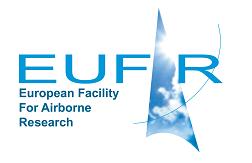Project

OLACTA-2: Observing the Low-level Atmospheric Circulation in Tropical Atlantic
Abstract
The EUFAR OLACTA-2 project aimed to obtain a definitive dataset on the low-level atmospheric circulation (LLAC) in the Gulf of Guinea (GG), based on a suite of state-of-the-art in situ and remote sensing instruments intended to document the dynamics, thermodynamics and composition of the LLAC together with sea surface properties and near surface turbulent fluxes.
The low-level atmospheric circulation (LLAC) over the Gulf of Guinea (GG), which develops in response to an equatorial upwelling and resulting sea-surface temperature (SST) gradients, is most intense around the time of the monsoon onset (June/July). This has strong implications on air-sea interactions, moisture transport, cloud development, dust aerosols re-circulation and pollution ventilation in the coastal areas of southern West Africa (SWA). Most of the knowledge on this circulation has been gained through NWP and mesoscale models. To date, there exist no comprehensive observational dataset against which the models simulations can be challenged. Yet, most climate and regional models show large biases in simulated surface winds and SST in the Eastern Equatorial Atlantic. It is likely due to a mis-representation of the regional ocean-atmosphere couplings. Two identical meridional flights between coastal SWA and 2°N are planned (once the equatorial cold tongue is established) for a total of 10 hours of flying time. This project took place in the framework of the EU funded DACCIWA project in June/July 2016 in SWA. The project will also serve the purpose of the EU funded PREFACE project which aims at advancing knowledge on Tropical Atlantic climate.
Details
| Keywords: | EUFAR, OLACTA-2, circulation |
|---|---|
| Previously used record identifiers: |
No related previous identifiers.
|
